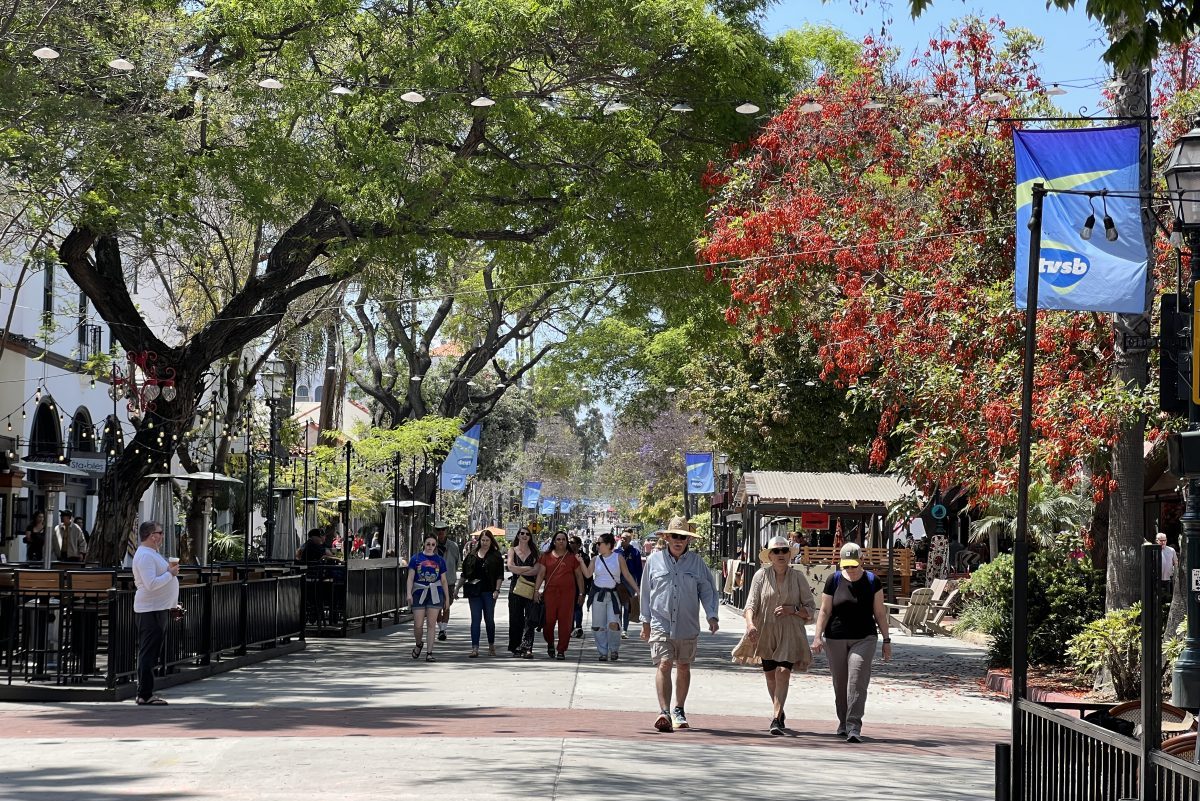Unraveling Santa Barbara’s Outdoor Dining Policies Post-Pandemic
City Council Wrestles with Difficulties of Making Outdoor Dining on Private Property Feasible for Business Owners

During the pandemic, Santa Barbara city government scrambled to rescue the abandoned downtown by passing emergency codes allowing restaurants to expand to relatively healthier, less confined outdoor spaces into the empty streets and onto unused private properties, even parking lots.
Perhaps not surprisingly, this helped revitalize Santa Barbara’s restaurant scene. Diners grew to enjoy eating al fresco, even preferring it, while the restauranteurs loved the increased revenue.
But the city’s temporary ordinance that allowed this expansion is scheduled to expire at the end of the year, and it seems that the outdoor dining bubble may be about to burst — at least for some restaurants.
Many of the underutilized spaces that worked so well for diners and restauranteurs alike, it now turns out, may be out of compliance with state regulations.
This week, Santa Barbara City Council heard State Street Master Planner Tess Harris give an update on the permitting process for outdoor dining on private property (not to be confused with streetside parklets). A new “pre-application” process has been designed to help applicants determine what changes would be needed to fit the state code. Some of the more expensive requirements could be building additional bathrooms to accommodate the extra dining areas.
Applicants could then decide whether they wanted to continue through the entire permitting process, which includes a design review and building permit application costing thousands of dollars.
“I’m disappointed today,” said Councilmember Mike Jordan. “It’s like waking up from a good dream and entering real life again.” He thought this was a convoluted permitting process, and said he wished there had been some way to find a “template-based, over-the-counter method” that would encourage more business owners to apply.
“I think we are going backward,” Jordan said, adding that he is worried that only the “biggest and most successful” businesses will be able to navigate the permit process, and others “are just going to run up against a wall and give up.”
He noted that the reality of building codes and regulations over bathrooms and parking spaces are taking away from what he said “seems to be a valiant effort” to reimagine spaces. “Optimism gets lost when you start talking about details and limitations,” he said.
One change that was approved by the council Tuesday was to cut the cost of the Coastal Development Permit in half for those applying in the coastal zone. Previously, the permit would cost more than $11,000, but the council unanimously voted to introduce a permit specific to outdoor dining that would cost $5,535.
Businesses that wish to apply to keep their outdoor dining on private property must submit a pre-application by December 20, 2023 — before the winter break — in order to be in compliance. “As long as they are showing good faith effort and going through the permitting process, they would be allowed to maintain their facility as they go through the permit process,” Harris said.
City staff expect to receive anywhere from 20 to 35 applications, depending on how many businesses would like to keep their existing facilities and how many would like to apply for a new space.



